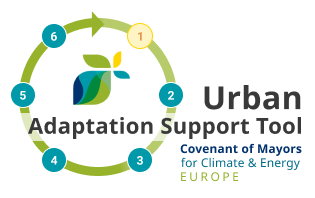
Preparing the ground for adaptation
1.6 Identifying and engaging stakeholders
Following the RESIN methodology, stakeholder analysis should be carried out to identify who needs to be involved and to understand what are interests and positions of respective stakeholders. This includes the identification of stakeholders, differentiating between and categorizing stakeholders, and identification of relationships between stakeholders. Next, a well-designed process is needed to involve the many different stakeholders in the climate adaptation planning process with attention given to transparency, open communication, trust and relationships, roles and responsibilities, and commitment. Finally, a communication strategy should address both internal and external communication. This includes defining a communication goal and objective, identifying target groups, creating a message, timing delivery, choosing the form and channels of communication, and utilizing supportive communication methods and tools (see also Step 1.7).
Cooperation with relevant stakeholders, including sectoral authorities, interest groups, NGOs or representatives from the private sector can be set up with different levels of involvement - from informing, to consultation or participatory involvement throughout the whole process. The level of involvement can also change over the course of the adaptation process (e.g. high level when defining objectives vs. low level when working on an evaluation scheme). But when starting the process, the objectives as well as the role of stakeholders need to be clear and communicated to manage expectations.
All relevant departments or authorities (e.g. responsible for health, civil protection, transport, energy, economy, finance, education, etc.) need to be informed and involved in the adaptation process, receiving a clear mandate to take decisions in their fields of responsibility. This applies as well to the core team discussed in Step 1.3. Their degree of involvement may vary from providing and exchanging information to building adaptive capacity or to taking decisions on adaptation within their sphere of authority.
It is also useful to make use of existing stakeholder platforms and institutional set-ups. For example, some cities may already have an established stakeholder participation process and institutional set-up for the involvement of stakeholders in sustainable development planning, urban or spatial planning.
Some key points when involving stakeholders should be taken into account:
- Every stakeholder involvement process is different and thus a diversified skill set (e.g. moderation, mediation, adaptation related knowledge) is needed to deal with the various possible developments in the phases of involvement;
- Stakeholder involvement processes are resource intensive (e.g. human and financial) and thus a clear process design should be available right from the start to calculate resources needed by stakeholders as well as the organization team;
- Short handouts about the process as well as minutes documenting the discussions and key results within the process should be prepared to guarantee the continuous information exchange and transparency;
- Stakeholders need to be informed about the intended use of results and give their approval in case of a planned publication.
Careful consideration needs to be given to the messages and communication tools used when addressing each type of stakeholder group and target audience (see Step 1.7).
